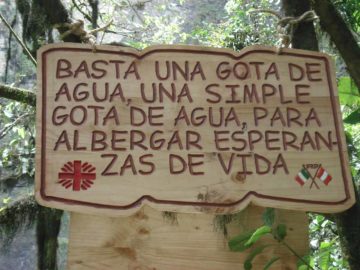About Pozo de los Humos
Pozo de los Humos (meaning well of smoke) was one of those semi-remote out-of-the-way waterfalls not far from the Spanish-Portugese border that was really our waterfalling excuse to visit the Renaissance city of Salamanca. It turned out that there were two different ways to experience this falls – one by the brink of the 50m waterfall (the Masueco side) and the other by a distant lookout with a direct frontal view of the falls (which is shown at the top of this page; the Pereña de la Ribera side). There was no sanctioned way to directly cross from one side of the gorge to the other by foot so for all intents and purposes, each method of visitation was pretty much its own excursion.
Our visit to this waterfall was during early June 2015. Apparently, the best time of year to visit this falls would be in the mid-Spring (say March or April time frame) when the Río de las Uces should have more substantial flow that might be better suited to earn its name as the well of smoke than the less-than-average flow in which we happened to experience the falls. It seemed like this fairly underdeveloped spot in a remote corner of the Castilla y León Region tended to dry out pretty quick early into Summer though from the presence of power lines around the gorge, it wouldn’t surprise me if hydroelectricity affecting the Río de las Uces might have also decreased its year-to-year longevity.
As for our experience with the falls, we started with the Masueco side so we’ll describe that side first. The Pereña de la Ribera side will be described later.
[tabby] [tabby title=”Masueco”]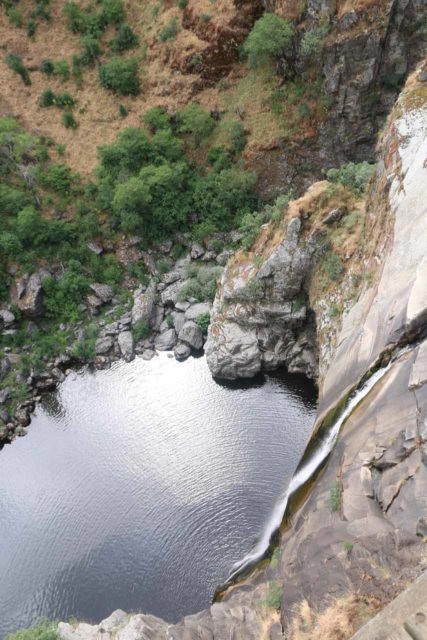
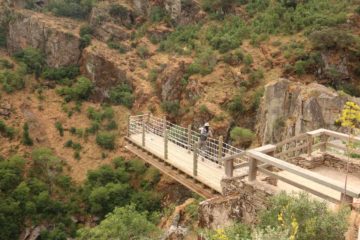
Once we got to the bottom of the descent, there was some kind of hut down here with a handwritten blurb in Spanish about “Las Arribes y Los Humos” and urging the reader to respect what’s here. Just a few paces further down the hill were the railings and lookouts with awkward views of the Pozo de los Humos. Perhaps the most dramatic of these miradores was the last one, which was protruding and overhanging above the sheer drop of the gorge wall just to the side of the bottom drop of the waterfall. This marked our turnaround point. And overall, we would wind up spending under 90 minutes to do both the hike as well as taking in the overlooks.
[tabby title=”Perena De La Ribera”]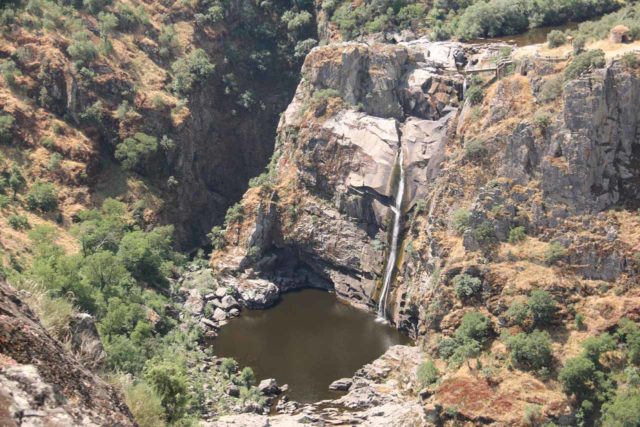
It turned out that the roughly 1.8km hike in each direction (3.6km round trip) was longer than what might be possible had the road not been blocked to vehicular access between February 15 and June 30. I only realized this when I did the hike and saw that there was a car park only 400m away from the mirador! This restricted access policy was said to protect wildlife according to the Spanish signs posted throughout the road portion of the hike. Incidentally, this restricted access period also happened to be the times when the waterfall would be flowing so for all intents and purposes, the waterfall excursion would pretty much be the longer hike and not as easy as it could be the rest of the year when it would only require 800m of walking round trip. Thus, the difficulty rating given at the top of this page was pretty much the same as what I judged the Masueco side’s difficulty to be.
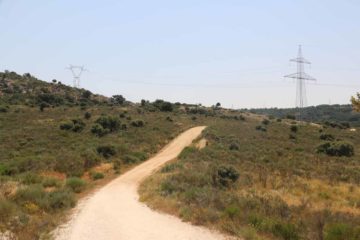
Throughout the entire duration of the hike, I was able to look across the gorge and see the car park and trail we had taken earlier in the morning as well as the town of Masueco further up. The final 400m of the hike just past the car park had a slightly steeper downhill grade until it reached the mirador. There were no railings at the lookout as it was nothing more than just an open space with dropoffs along with an interpretive sign similar to what I saw at the trailhead for the Masueco side. Overall, I spent 40 minutes away from the car hiking fast. Under a more leisurely pace, I could easily see this excursion taking at least an hour.
[tabbyending]Related Top 10 Lists
No Posts Found
Trip Planning Resources
Nearby Accommodations
This content is for members only. See Membership Options.Featured Images and Nearby Attractions
This content is for members only. See Membership Options.Visitor Comments:
Got something you'd like to share or say to keep the conversation going? Feel free to leave a comment below...No users have replied to the content on this page
Visitor Reviews of this Waterfall:
If you have a waterfall story or write-up that you'd like to share, feel free to click the button below and fill out the form...No users have submitted a write-up/review of this waterfall




